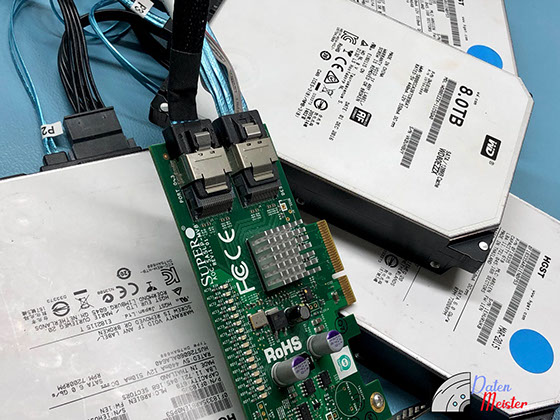Operation of Fault-Tolerant Disk Arrays (RAID)
Usually, many organizations use a SAN, or NAS server with support for a fault-tolerant RAID array function, to store important information.
Such a device has several bays, slots, for hot-swappable hard drives.
For storing and processing important data, it is recommended to use a RAID 10 disk array, since a RAID 10 disk array is the most reliable and fault-tolerant. For example, after installing four 4TB hard drives, after combining these drives into a RAID 10 array, 8TB will be available for use. The rate at which disk space fills up dictates the conditions for choosing higher or lower capacity disks. If necessary, in the future, you can change the disks to others.
Often use a disk array system RAID 5, RAID 5E, RAID 6.
There are many factors that can cause problems in the operation of disk arrays, as a result of which there is a chance of losing very important data:
1. Regular equipment failures.
2. Failure of elements of power sources of low quality factor.
3. Cyclic voltage drops of disks supplying electronic circuits.
4. Untimely replacement of faulty drives in the array.
5. Failure of the RAID controller, or its failure.
6. Lack of marking of array members.
7. Failure in the process of RAID reconstruction, rebuild.
8. Unqualified intervention in the operation of the server.
When identifying a failure in the operation of a disk array, you must perform the following actions:
1. If the discs are not numbered, number them in the order of installation and replacement.
2. Retrieve from the server. Do not connect, do not initialize in the operating system.
3. Bring it to us for diagnostics.


Attention! Any attempt of unqualified intervention can lead to partial or complete loss of information with the impossibility of recovering it in the future.












